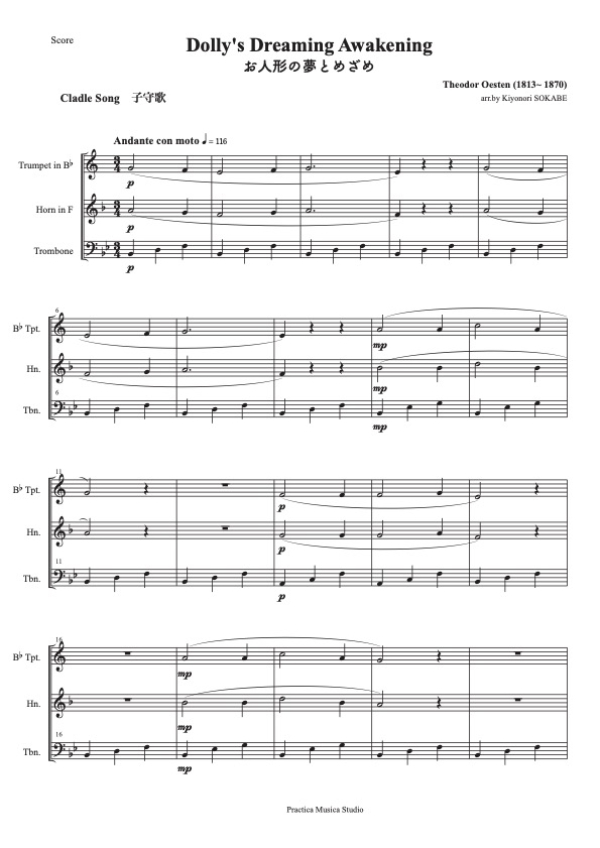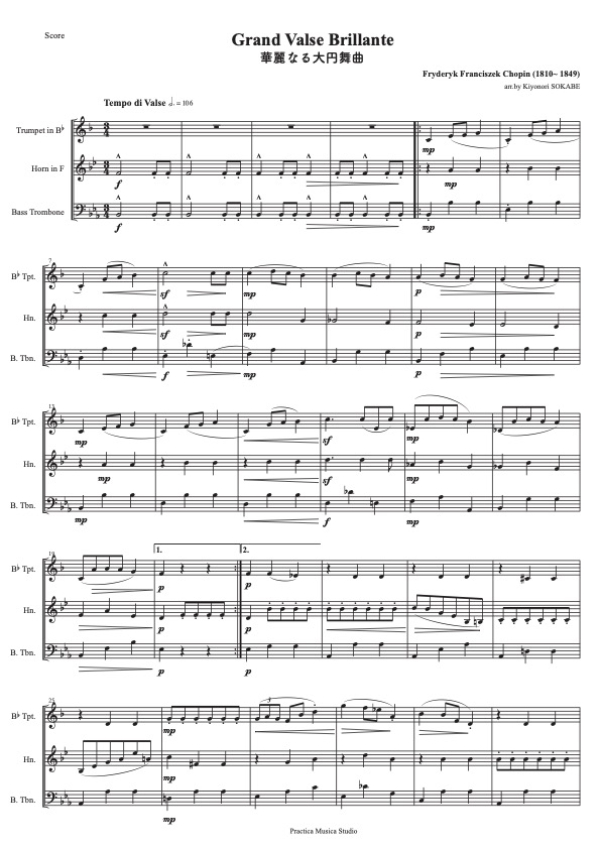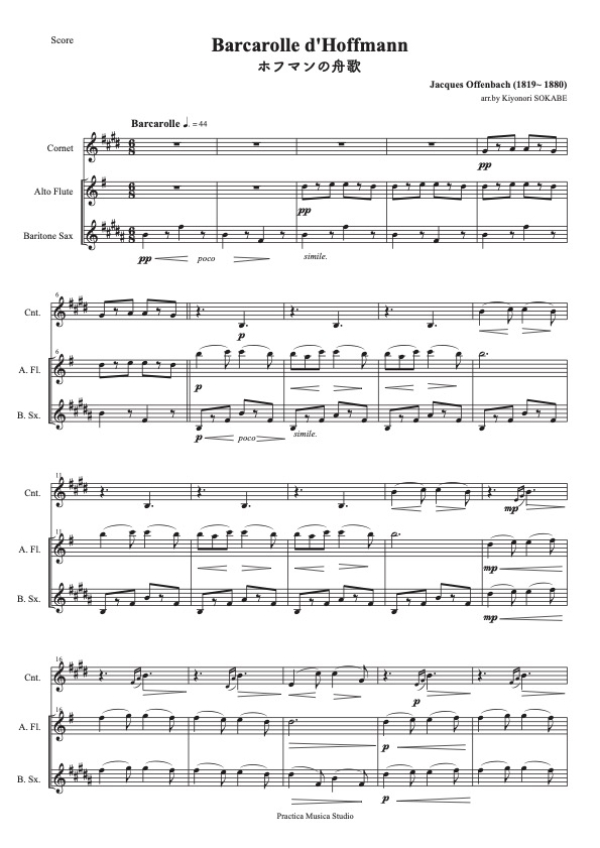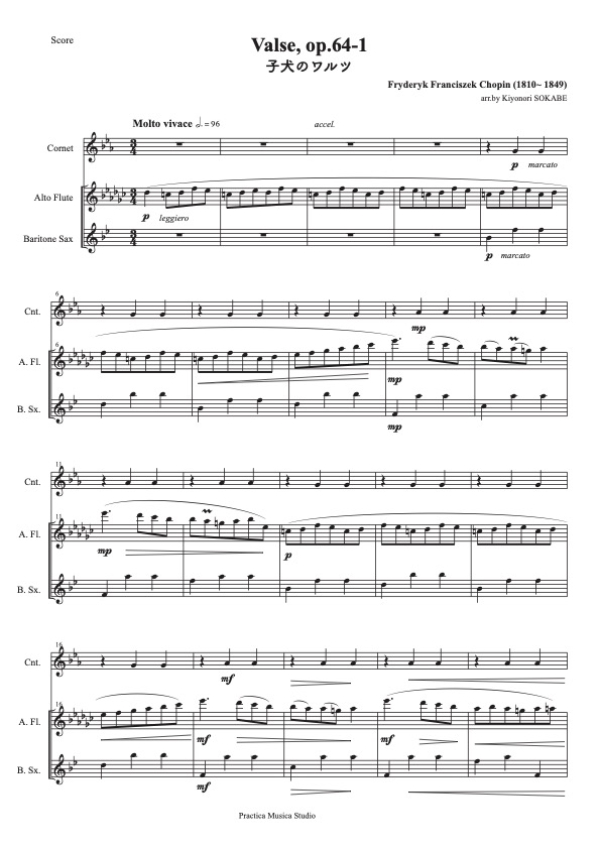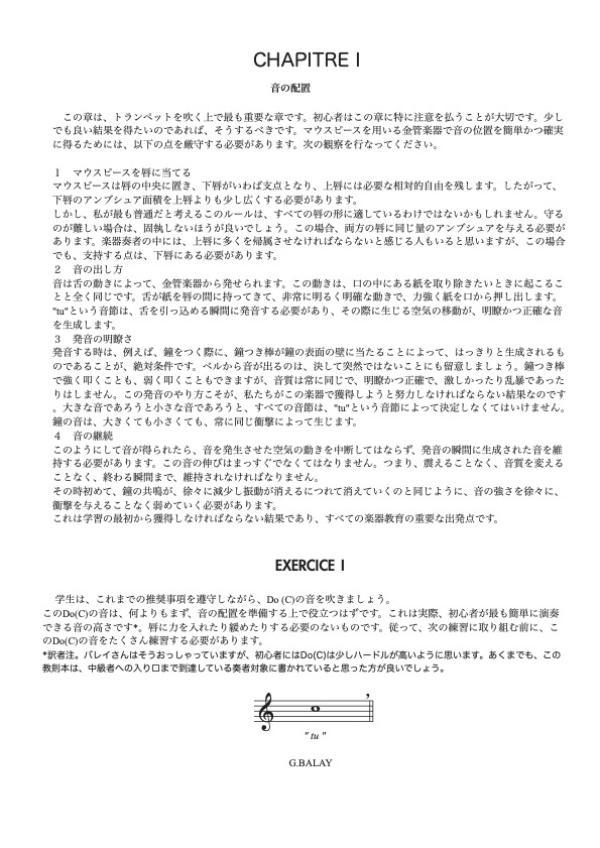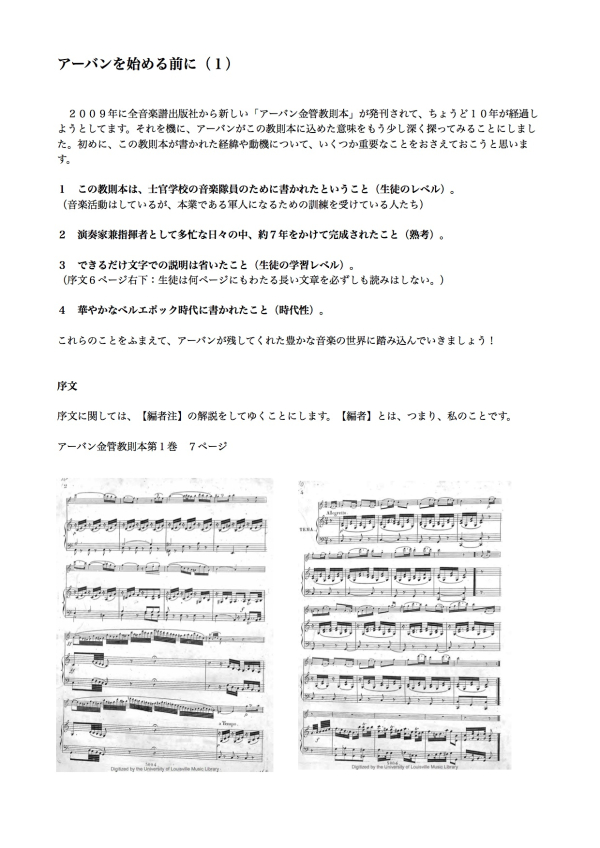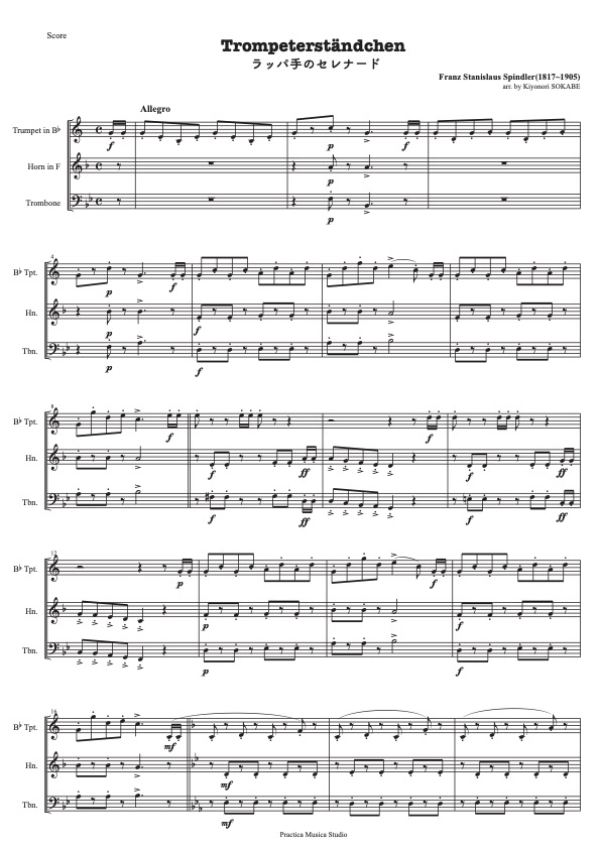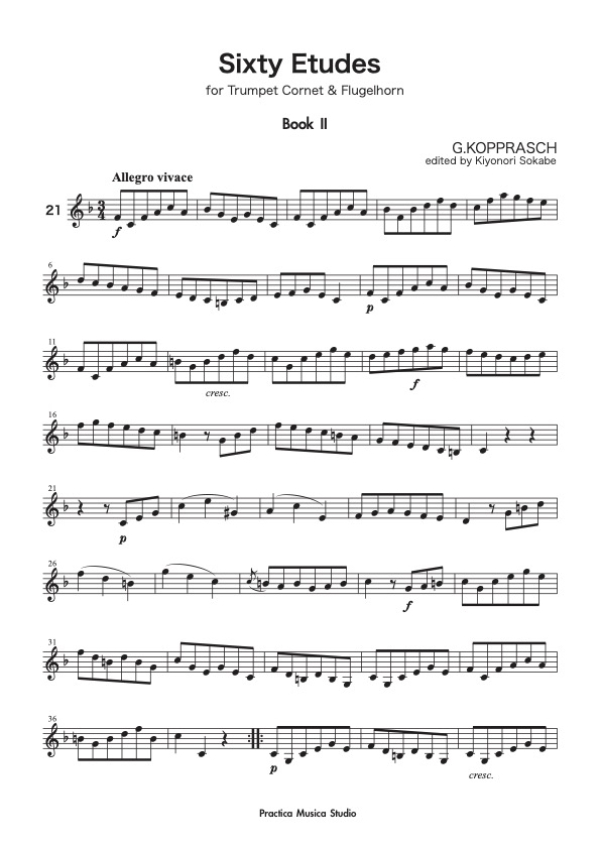New Releases
Our Staff Picks
News
Holiday Adventure
YAMAMOTO, Jun山本準
A short piano solo piece for children.
こども向けの短いピアノ独奏小品です。お休みの日のこどもの大冒険を描いています。
Prelude "Sign of Rain" for Flute and Piano
YAMAMOTO, Jun (arr. YAMAMOTO, Jun)山本準(arr. 山本準)
The piece begins with a chord played on the piano in the upper register, consisting of the notes D, A, B♭, E, F, and E. For the composer, this felt like a sign that "rain is coming." Following this piano prelude containing this chord, the main melody is played by the flute over a 6/8 arpeggiated chord. Subsequently, the "rain" begins with a continuous stream of 16th notes on the piano. The flute melody returns with a slight increase in intensity, and the prelude is recalled in a piano solo. The piano then shifts to an accompaniment of continuous 16th notes, and the music becomes somewhat more urgent. After a middle section featuring a flute solo, the piece enters a rapid final section. The flute plays a free melody over a regular three-beat accompaniment on the piano. Following a passage in unison between the flute and piano, the piece moves into the coda and concludes. This piece has premiered by Yukari Kaneko (fl.) Noa Watanabe(pf) on November 8th, 2025, in Koshi-no-Kaze no. 14.
曲はピアノによる高音部でのD, A, B♭, E, F, Eという和音から始まります。これが作曲者にとっては、「雨が降ってくるぞ」というサインに感じられます。この和音を含むピアノによる前奏に続いて8分の6の分散和音にのってフルートの主たるメロディーが演奏されます。これに引き続きピアノの16分音符の連続によって「雨」が降り始めます。多少の高揚を伴ってフルートのメロディーが帰ってきて、また、前奏部がピアノソロで回想されます。ピアノは16分音符の連続による伴奏に回り、やや音楽は切迫していきます。フルートソロによる中間部を挟んで、急速な後半部分に入ります。ピアノの3拍子による規則的な伴奏にのってフルートは自由に旋律を奏します。そののち、フルートとピアノのユニゾンによる一節を経て、曲はコーダへと進み終結します。本作品は、2025年11月8日、越の会No.14にて、フルート金子由香利、ピアノ渡部乃亜により初演されました。
Dimmlight.Dinner
YAMAMOTO, Jun山本準
This piece was inspired by Edward Hopper's painting, Dimmlight Dinner.
本作品はEdward.Hopperの絵画、Dimmlight.Dinner.に触発されて作曲された。
Dimmlight.Dinner
YAMAMOTO, Jun山本準
This piece was inspired by Edward Hopper's painting, Dimmlight Dinner.
本作品はEdward.Hopperの絵画、Dimmlight.Dinner.に触発されて作曲された。
Dimmlight.Dinner
YAMAMOTO, Jun山本準
This piece was inspired by Edward Hopper's painting, Dimmlight Dinner.
本作品はEdward.Hopperの絵画、Dimmlight.Dinner.に触発されて作曲された。
Dolly's Dreaming Awakening
OESTEN, Theodor (arr. SOKABE, Kiyonori)テオドール・エステン(arr. 曽我部清典)
Dolly's Dreaming Awakening for Brass Trio.
作曲者のテオドール・オースティンは著名な教師でもありました。この曲は、眠っているお人形が夢を見たり、目を覚まして踊っている様子を、子どもたちがピアノで表現しやすいようにと、作曲したものです。ブラストリオの入門ようにアレンジしてみました。
Grande valse brillante
CHOPIN, Frédéric François (arr. SOKABE, Kiyonori)フレデリック・フランソワ・ショパン(arr. 曽我部清典)
Grande valse brillante by Chopin for Brass Trio.
ショパンのワルツの中でも最初に出版された「華麗なる大円舞曲」をブラストリオに編曲しました。
Barcarolle d'Hoffmann
OFFENBACH, Jacques (arr. SOKABE, Kiyonori)ジャック・オッフェンバック(arr. 曽我部清典)
Barcarolle d'Hoffmann by Offenbach for Trio à Vent de Shycoque.
オッフェンバックのホフマンの舟歌を、トリオアヴェントdeシコクのために編曲しました。
Valse, op. 64 - 1
CHOPIN, Frédéric François (arr. SOKABE, Kiyonori)フレデリック・フランソワ・ショパン(arr. 曽我部清典)
Valse, op. 64 - 1 by Chopin for Trio à Vent de Shycoque.
ショパンのワルツの中でも生前に公表された最後のワルツ集から、作家ジョルジュ・サンドの愛犬を思って書いた「子犬のワルツ」です。アルトフルート・コルネット・バリトンサックスという荒唐無稽な編成の『トリオ四国の風』のために編曲しました。もしこの編曲が気に入って下さって購入を検討して下さる方には、多少の編成の変更も可能ですので、ご連絡ください。
Valse, op.64-1
CHOPIN, Frédéric François (arr. SOKABE, Kiyonori)フレデリック・フランソワ・ショパン(arr. 曽我部清典)
Valse, op.64-1 by Chopin for Brass Trio GROOOVE.
ショパンの子犬のワルツをブラストリオに編曲しました。
Barcarolle d'Hoffmann
OFFENBACH, Jacques (arr. SOKABE, Kiyonori)ジャック・オッフェンバック(arr. 曽我部清典)
Barcarolle d'Hoffmann by Offenbach for Brass Trio GROOOVE.
オペレッタの作曲家として名高いオッフェンバックが、不朽の名作を残そうと着手した「ホフマン物語」から、最も有名な『ホフマンの舟歌』をブラストリオに編曲しました。
Clarinet Sonata
YAMAMOTO, Jun山本準
A movement in Sonata style for Bb Clarinet and Piano in a moll.
単一楽章のクラリネットとピアノのためのソナタ。イ短調。



